I wrote about the benefits of Reishiki – Etiquette in Kyokushin Karate before, which was focused on the philosophy of etiquette. Consider this a follow-up, outlining some very important etiquette conduct, which should be followed in any dojo.
We all have busy lives, between work, personal responsibilities and not to mention the general congestion of a busy city. Somehow though, if something is important to us we do what we can to arrive on time.
The Karate Dojo should be treated the same as general life, even meaning it is very bad manners to be late. It is disrespectful to the teacher, your fellow students and to the training hall itself. Of course there are times this is unavoidable, and when that happens there is etiquette we follow. This too is the case in the dojo as it is in life. However, this should not become a habit.
Arriving Late
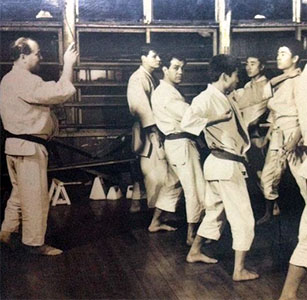
As a student you should always try to arrive at class on time, as this is a sign of respect for your dojo, your classmates and for your teacher. Late arrival can disturb the class.
Traditionally, in Japan, it is known that an instructor will sometimes refuse to teach the class if the students are not ready to train on time. Certain instructors will demonstrate their displeasure by simply walking out of the dojo. It is considered a great disrespect to the teacher’s time and to the training hall itself.
However, as I mentioned above, there are times when you can’t avoid being late and if you are late you should get changed quickly and hurry to the edge of the dojo floor. Bow and “OSU!” in the direction of the Sensei and then kneel in seiza (meditation posture), just on the edge of the dojo floor or entrance, and wait for teacher to signal to you to join in.
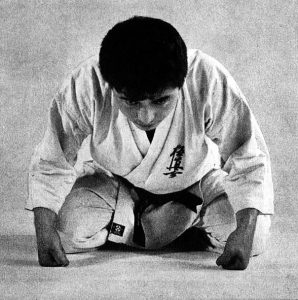 Do not make any noise whatsoever, just wait quietly until the Sensei or Senpai instructor acknowledges you and invites you to join the class. This may not happen immediately, and it is important to remember that you must remain kneeling where you are until your are invited in.
Do not make any noise whatsoever, just wait quietly until the Sensei or Senpai instructor acknowledges you and invites you to join the class. This may not happen immediately, and it is important to remember that you must remain kneeling where you are until your are invited in.
Once the teacher has given you permission to enter the class you should answer by bowing and saying “Osu! Sensei!“, stand up and run quickly and quietly to your place in the relevant line in the class, going behind the class lines and not cutting through the class or across the dojo floor.
You might be asked to do some push-ups before you join the class, and this can be seen as a way of saying to the class that you are sorry for being late.
Dōgi and Obi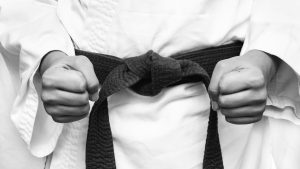
It is important that you remember to bring a clean Dōgi (uniform) and Obi (literally “sash” or belt). To forget one or the other is very disrespectful. As well, during class you might find your gi and/or belt has become loose, or dishevelled. Before adjusting or tidying yourself up, you must bow and “Osu”, but not too loud. Then turn away from the front of the class, adjust yourself quickly. Turn back to the front of the class and bow and “Osu” again in Fudo-dachi.
Personal Etiquette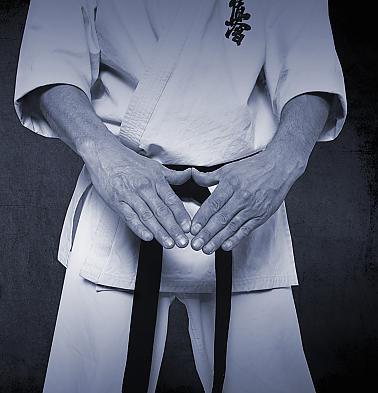
Your Gi should be clean, tidy and in good condition at all times prior to a lesson. Any rips taken care of and any stains removed, if possible. Those with long hair must ensure that it’s tied back so as not to obscure vision. Feet in particular must be clean and toenails and fingernails must be kept short so as to avoid injury. No jewellery should be work during a lesson since it can cause injury to either yourself or another karateka.
Etiquette in Kumite
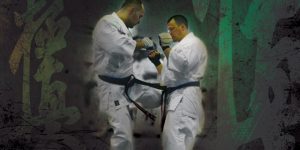
Like arriving to class late, when asked to change into sparring equipment it should be done quickly and as quietly as possible, returning to the dojo floor lining up in the usual straight lines and in grade order.
If you do not have any part of your sparring gear you should try to borrow some or let the Sensei know who then has discretion to excuse you from sparring, allow you to spar anyway, or ask you to do some alternative training.
Senior grades who pair with a lower grade should adjust their level of sparring to suit their partner, since sparring in the dojo is not really about who is the best but rather a “learning experience”. If you are hit with a good technique it is courteous to say “Osu” to your partner, thereby acknowledging your partner’s techniques. Likewise, if you catch your partner with a good technique you must show courtesy by saying “Osu”.
As soon as the Sensei calls “Yame!, or Stop!, you immediately stop and return to your position in the dojo before that element of sparring began. When you join or leave your partner you must first bow in Fudo-dachi, say “Osu!, Arigatou gozaimasu – [ah-ree-gah-toh goh-zah-ee-mas]” to thank them for their help during sparring.
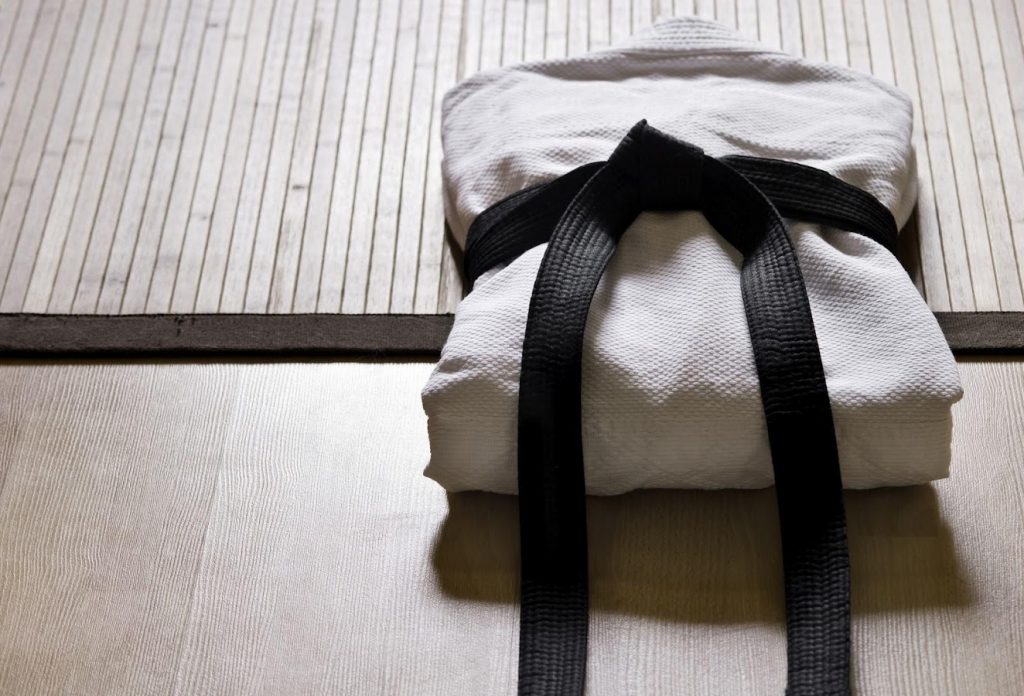
Enjoy the article.
[…] is etiquette obviously in the dojo, and when and how to use Osu is no different. There is debate not only on the […]
Does anyone have a list of the Japanese terms generally used in Kyokushin classes? I know the strikes, blocks, etc., more looking for “switch sides”, “turn and fix your dogi”, etc.
Very good
respect is one of the main elements missing in our life to-day, everybody should respect each other
as civility does not cost, but reaps great benefits if followed